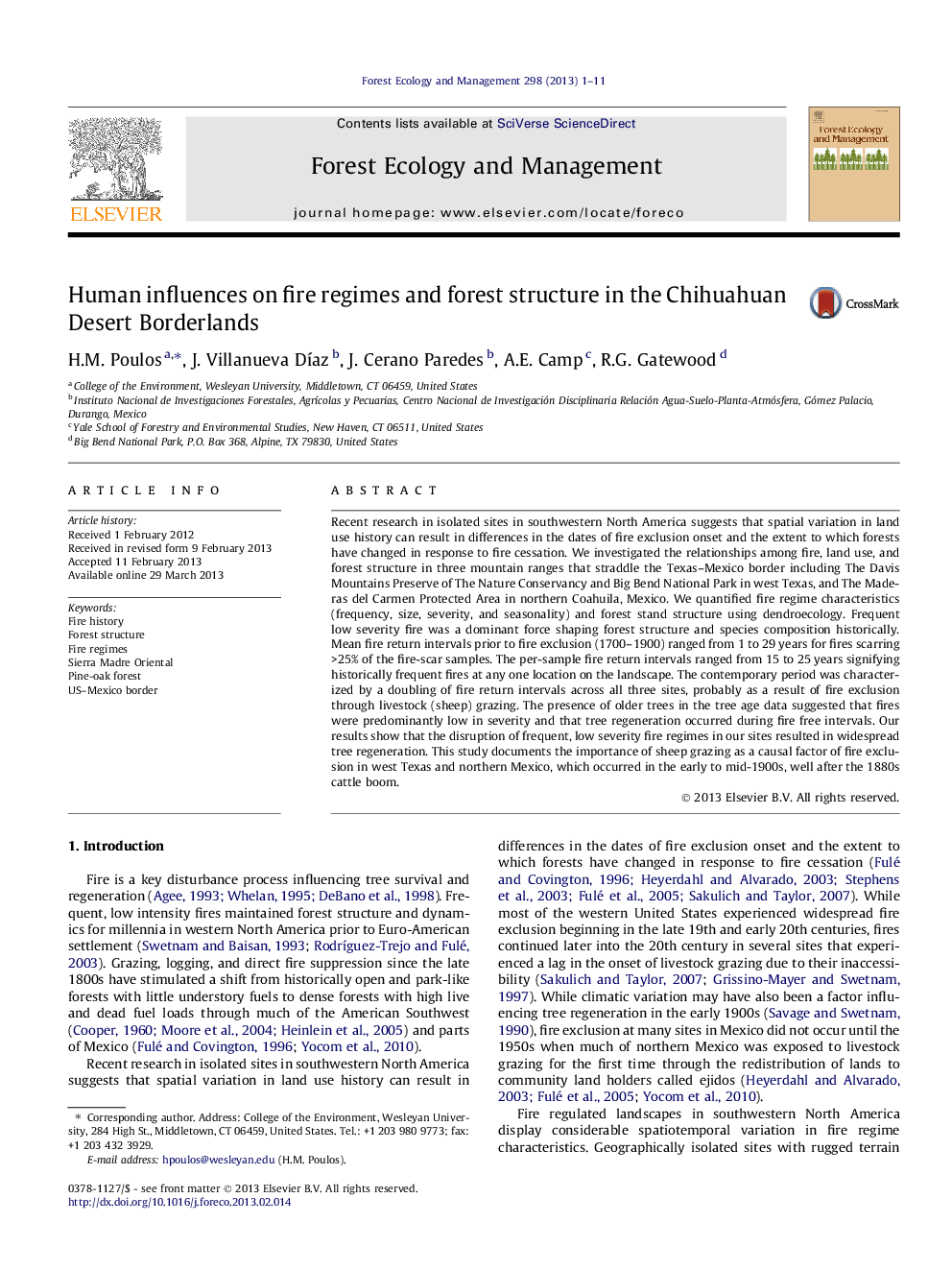| کد مقاله | کد نشریه | سال انتشار | مقاله انگلیسی | نسخه تمام متن |
|---|---|---|---|---|
| 86832 | 159216 | 2013 | 11 صفحه PDF | دانلود رایگان |

Recent research in isolated sites in southwestern North America suggests that spatial variation in land use history can result in differences in the dates of fire exclusion onset and the extent to which forests have changed in response to fire cessation. We investigated the relationships among fire, land use, and forest structure in three mountain ranges that straddle the Texas–Mexico border including The Davis Mountains Preserve of The Nature Conservancy and Big Bend National Park in west Texas, and The Maderas del Carmen Protected Area in northern Coahuila, Mexico. We quantified fire regime characteristics (frequency, size, severity, and seasonality) and forest stand structure using dendroecology. Frequent low severity fire was a dominant force shaping forest structure and species composition historically. Mean fire return intervals prior to fire exclusion (1700–1900) ranged from 1 to 29 years for fires scarring >25% of the fire-scar samples. The per-sample fire return intervals ranged from 15 to 25 years signifying historically frequent fires at any one location on the landscape. The contemporary period was characterized by a doubling of fire return intervals across all three sites, probably as a result of fire exclusion through livestock (sheep) grazing. The presence of older trees in the tree age data suggested that fires were predominantly low in severity and that tree regeneration occurred during fire free intervals. Our results show that the disruption of frequent, low severity fire regimes in our sites resulted in widespread tree regeneration. This study documents the importance of sheep grazing as a causal factor of fire exclusion in west Texas and northern Mexico, which occurred in the early to mid-1900s, well after the 1880s cattle boom.
Figure optionsDownload as PowerPoint slideHighlights
► We examined fire regimes and forest structure of the Texas–Mexico borderlands.
► Fire cessation and forest regeneration occurred in the early- to mid-1900s.
► Sheep pasturing was responsible for the onset of fire exclusion.
► Fire exclusion occurred at different times each site due to divergent land use history.
Journal: Forest Ecology and Management - Volume 298, 15 June 2013, Pages 1–11